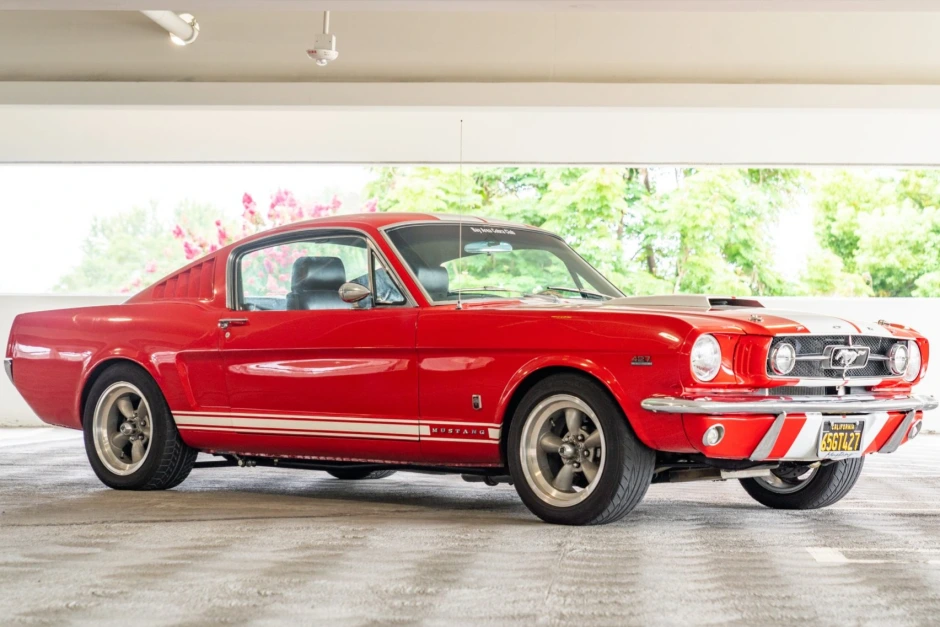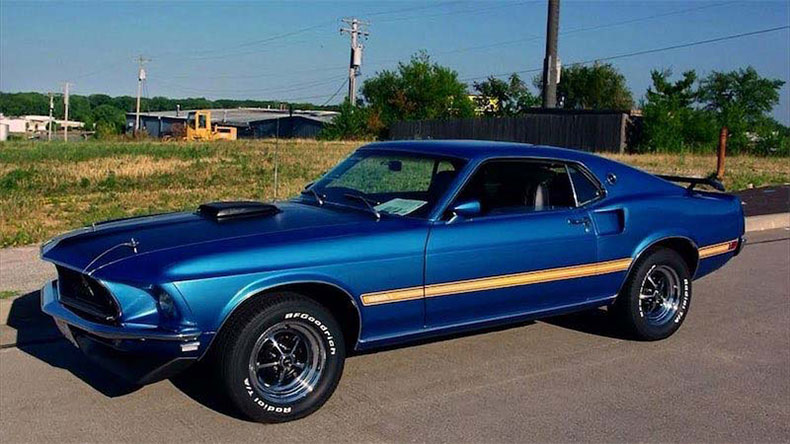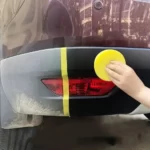Looking to restore a classic car? Some of the best Classic Cars to Restore include the Ford Mustang, Chevrolet Camaro, and Volkswagen Beetle.
Table of Contents
ToggleThese iconic models offer timeless appeal and are popular choices for car restoration enthusiasts. Classic cars have a nostalgic charm and can be a fulfilling project for those passionate about vintage automobiles. Whether you’re drawn to the sleek lines of a vintage sports car or the retro styling of a muscle car, restoring a classic vehicle can be a rewarding endeavor.
From sourcing rare parts to reviving a piece of automotive history, classic car restoration allows enthusiasts to indulge in their passion for vintage automobiles while creating a unique and personalized driving experience.
1. Iconic Classic Cars
Classic cars hold a special place in the hearts of car enthusiasts and collectors alike. Restoring these vintage beauties not only revives their former glory but also preserves automotive history. When it comes to classic car restoration, some iconic models stand out from the rest. Here, we’ll explore the most sought-after models and the popularity of classic car restoration.
1.1 Most Sought-after Models
If you’re considering venturing into the world of classic car restoration, you’re probably wondering which models to start with. Rest assured, there are plenty of options available. Some of the easiest classic cars to restore have become widely sought-after due to their timeless appeal and nostalgic value. These models provide an excellent foundation for a restoration project.
- Ford Mustang
- Chevrolet Camaro
- Volkswagen Beetle
- Porsche 911
- Jeep Wrangler
These iconic classics not only offer simplicity in terms of mechanical components but are also backed by a robust aftermarket support system. Parts availability is essential when restoring a classic car, making these models highly desirable for enthusiasts of all skill levels.
1.2 Popularity Of Classic Car Restoration
The popularity of classic car restoration has been steadily growing over the years. Not only is it a rewarding and fulfilling hobby, but it also provides financial benefits. Restored classic cars hold their value exceptionally well, and the market for these timeless machines continues to flourish. As more people realize the inherent charm and uniqueness of classic cars, the demand for restored models increases.
Restoring classic cars allows individuals to not only bring these automotive legends back to life but also put their personal touch on them. Whether it’s preserving the car’s original beauty or adding modern enhancements, the restoration process offers endless possibilities for customization.
Moreover, classic car restoration fosters a sense of community among enthusiasts. Car shows, gatherings, and online forums provide opportunities for like-minded individuals to connect and share their passion for these iconic vehicles. This camaraderie further fuels the popularity of classic car restoration.

Credit: raybuck.com
2. Factors To Consider
When considering classic cars to restore, there are several important factors to take into account. From rarity and availability to market demand and restoration costs, examining these factors will help to guide your restoration project and ensure that you choose the right vehicle for your needs.
2.1 Rarity And Availability
One of the key considerations when choosing a classic car to restore is its rarity and availability. Easiest classic cars to restore are often those that have a reasonable availability of spare parts and aftermarket support. Popular models such as the Ford Mustang or Chevrolet Camaro can be easier to find parts for due to their production volume and enthusiast following.
2.2 Market Demand
Assessing the market demand for a classic car is crucial. The best cars to restore for potential resale value are those that have a strong demand in the collector car market. Researching trends and consulting with knowledgeable enthusiasts or appraisers can provide valuable insights into the current and projected demand for specific models.
2.3 Restoration Costs
Restoration costs can vary significantly depending on the model and condition of the classic car. It’s important to carefully evaluate the extent of work needed and the availability of replacement parts when estimating restoration expenses. Easiest classic cars to restore often have a wide availability of affordable replacement parts, minimizing overall restoration costs.
3. Resources For Restoration
When it comes to restoring classic cars, having the right resources is crucial to ensure an authentic and professional restoration. Whether you’re on the lookout for authentic parts and accessories or seeking professional restoration services, having access to these resources can make the restoration process streamlined and successful.
3.1 Authentic Parts And Accessories
Restoring classic cars requires sourcing authentic parts and accessories to maintain the vehicle’s originality and value. Whether it’s a vintage engine component or a rare trim piece, finding these parts can sometimes be a challenge. However, numerous specialized suppliers and online marketplaces offer an extensive range of authentic parts and accessories for the easiest classic cars to restore, making the restoration journey an exciting one.
3.2 Professional Restoration Services
For those seeking professional expertise and craftsmanship in restoring their classic cars, professional restoration services are invaluable. These services encompass a wide range of restoration expertise, including bodywork, paint, engine rebuilds, and interior refurbishment. Engaging with professional restoration services ensures that the best cars to restore for enthusiasts are meticulously brought back to their former glory.

Credit: www.carblog.co.uk
4. Restoration Process
Restoring classic cars is a meticulous process that involves bringing these vintage vehicles back to their original glory. Discover the best classic cars to restore and embark on a rewarding restoration journey.
4.1 Evaluating The Condition
Before diving into the restoration process, it is crucial to carefully evaluate the condition of the classic car you have chosen. This step will help you determine the extent of work needed and whether it’s worth the effort.
Start by examining the body of the car, checking for any signs of rust, dents, or damage. Take note of any missing or worn-out parts that need replacement. Additionally, assess the engine, transmission, and suspension to ensure they are in working condition and not heavily damaged.
Creating a detailed list of all the repairs and replacements needed will give you a clear roadmap for the restoration process. This evaluation ensures that you choose the easiest classic cars to restore to their former glory.
4.2 Step-by-step Restoration Guide
Now that you have thoroughly assessed the condition of the classic car, you’re ready to embark on the step-by-step restoration journey. Follow these essential stages to ensure a successful restoration process:
- Disassembly: Carefully disassemble the car, documenting each step and organizing the parts accordingly. This will make reassembly easier later on.
- Bodywork: Address any rust, dents, or damage the body of the car may have. Strip away the old paint and prepare the surface for a fresh coat.
- Mechanicals: Focus on restoring the engine, transmission, and other mechanical components. Replace worn-out parts and ensure everything functions smoothly.
- Electricals: Check the car’s electrical system, including the wiring, lights, and gauges. Replace any faulty components and ensure proper functionality.
- Interior: Restore the interior of the car, from the seats to the dashboard. Replace worn-out upholstery, fix any cracks, and restore the original glory of the cabin.
- Paint and Finish: Apply a fresh coat of paint, matching the original color if desired, and give the car a polished finish. This stage brings the car’s aesthetics back to life.
- Reassembly: Put all the restored components back together in the reverse order of disassembly. Ensure careful attention to detail during this process.
- Final Touches: Once the car is reassembled, conduct a final inspection to address any remaining issues. Fine-tune the mechanics, adjust the alignment, and perform necessary finishing touches.
Following this step-by-step restoration guide will help you revive the beauty of the classic car you’ve chosen. Embrace the process and enjoy the transformation as you work on one of the best cars to restore for a truly rewarding experience.
5. Showcasing The Finished Product
Restoring a classic car is a labor of love, and once your prized vehicle is fully restored, it’s time to showcase the amazing results of your hard work. Whether you plan to participate in classic car shows or build a classic car collection, there are numerous opportunities to display your restored classic cars and gain recognition for your craftsmanship and dedication. Let’s explore some of the best ways to showcase the finished products.
5.1 Participating In Classic Car Shows
One of the most exciting ways to showcase your restored classic car is by participating in classic car shows. These events bring together car enthusiasts, collectors, and admirers, providing a platform to display your labor of love. Classic car shows attract a diverse audience, giving you the opportunity to interact with fellow enthusiasts, exchange restoration stories, and learn from others’ experiences. Showcasing your restored classic car at these events allows you to share your passion and craftsmanship with a larger community.
When participating in classic car shows, it’s crucial to prepare your car for display. Here are some essential tips:
- Thoroughly clean and polish your classic car to ensure it looks its best.
- Check all mechanical components to ensure they are in top working condition.
- Highlight the unique features and history of your classic car using informational display cards.
- Join car clubs and associations related to your classic car’s make and model, as they often organize car shows and provide exclusive opportunities to showcase your restoration.
By following these tips and actively participating in classic car shows, you can showcase your restored classic car to a wider audience and garner recognition for your restoration skills.
5.2 Building A Classic Car Collection
If you have successfully restored one classic car, why not consider building a classic car collection? Building a collection allows you to expand your restoration skills and explore a variety of classic car models. It is an excellent way to showcase the diversity and craftsmanship of your restoration work.
When building a classic car collection, consider the following:
- Research and identify the easiest classic cars to restore and the best cars to restore for building your collection.
- Determine your budget and establish a clear plan for acquiring, restoring, and maintaining each car in your collection.
- Ensure you have adequate space and facilities for storing and displaying your collection.
- Document the restoration process and the history of each car in your collection to share the stories behind your treasures.
Building a classic car collection allows you to curate a unique ensemble of beautifully restored vehicles. You can share your collection with friends, family, and other car enthusiasts, providing them with a glimpse into the past and an appreciation for the timeless beauty of classic cars.

Credit: www.neighbor.com
Frequently Asked Questions On Best Classic Cars To Restore
What Are The Best Classic Cars To Restore?
The best classic cars to restore are the Ford Mustang, Chevrolet Camaro, Volkswagen Beetle, and Jaguar E-Type. Each of these iconic models offers timeless appeal and excellent potential for restoration projects.
Conclusion
The world of classic car restoration offers a treasure trove of timeless beauties waiting to be revived. Whether it’s the sleek lines of a Ford Mustang or the iconic charm of a Volkswagen Beetle, these vintage vehicles evoke a sense of nostalgia and craftsmanship.
Before embarking on a restoration project, remember to thoroughly research and evaluate the car’s condition. With patience, dedication, and the right resources, you can bring these classics back to life and enjoy the thrill of driving a piece of automotive history.
Happy restoring!




3 Comments